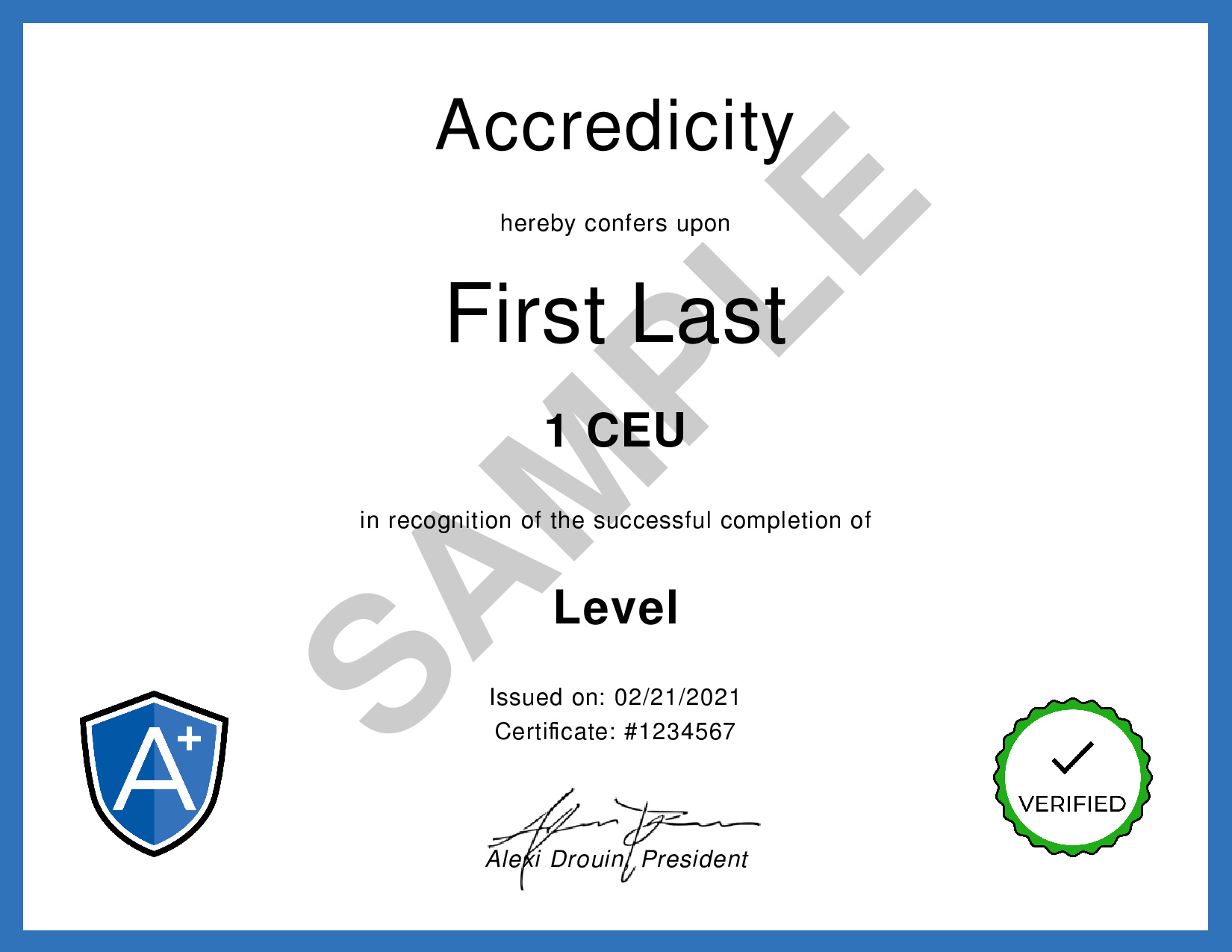Daniel Pink: Fear, Shame, Empathy | SXSW
We Make Your Education Count

Get the Credit You Deserve and Become the Most Attractive Job Candidate by Earning and Posting A+ Badges to Your Linkedin Profile.
Sign Up to Get Started at Accredicity
|
Discover the power of behavior change with Daniel Pink's captivating exploration of fear, shame, empathy and gamification. In this captivating SXSW session, Daniel Pink, the bestselling author of "Drive" and "To Sell is Human" and host and co-executive producer of NatGeoTV's "Crowd Control", assesses the science and practice of behavior change. He dives into Fear, Shame, and Empathy as techniques that can be used to powerfully influence people's decisions and actions. He also stresses how a slight adjustment to environment can have a drastic effect. By the end of the session, attendees are left with effective tips to modify behavior in their workplace, school, or home. Learning Outline1. Fear can be a powerful tool for behavior change, but it has its limits. Instructional ContentIn this enlightening and captivating session, Daniel Pink, best-selling author of "Drive" and "To Sell is Human" as well as the host and co-executive producer of NatGeoTV’s “Crowd Control”, examines the science and practice of behavior change. He focuses on how small changes to the environment can have a profound effect on what people do. He digs into the ability (and limits) of tactics like fear, gamification, empathy and distraction to modify behavior. After watching this video, you will have a better understanding of how to alter the behavior of those in your workplace, school, or residence. The video begins by introducing Pink's concept of the "Four Fs" which are the four most effective ways to alter behavior: Freedom, Fun, Frustration and Fear. Pink explains how Freedom is the most powerful tool and how it can be used to create an environment that encourages people to take ownership of their actions. Fun is also discussed, and Pink explains how gamification can be used to increase engagement. He goes on to talk about frustration and how it can be a powerful tool to push people to make changes. Lastly, he talks about fear and how it can be used to shift people out of their comfort zones. Pink then moves on to discuss the power of empathy. He explains how it can be used to create an environment of understanding, connection and openness. He also mentions the importance of distraction, and how it can be used to help people focus on their goals. Lastly, he talks about the importance of positive reinforcement and how it can be used to reward people for their performance. The video concludes by highlighting the importance of understanding how behavior can be changed in order to create a more effective and productive workplace. Pink emphasizes the importance of utilizing the right tools and techniques to create an environment that encourages people to take initiative and be their best selves. Overall, this video provides an interesting and insightful look into the science and practice of behavior change. It provides helpful tips on how to create an environment that encourages people to take ownership of their actions and be their best selves. Daniel Pink's engaging and entertaining talk sheds light on the power of freedom, fun, frustration, fear, empathy, distraction and positive reinforcement to help people make positive changes in their lives. If you are interested in learning more about how to influence behavior, this video is definitely worth a watch Communication
|

Daniel Pink talks about how to change people's behavior. He suggests using different techniques, like fear, gamification, empathy and distraction, to make small changes in the environment that can have a big impact on people's actions. It's like teaching a kid not to eat too many cookies: you can use fear by telling them they'll get sick if they do, or use empathy by explaining why it's not good for them, or even use distraction by offering them an apple instead! Video Quotes“We think of emotion as something that happens to us, but it's also something that we can do.” - Daniel Pink “The most powerful way to change behavior is to change the environment in which the behavior takes place.” - Daniel Pink “If you want to change behavior, don't focus on the person. Focus on the situation.” - Daniel Pink Related Quotes“In order to lead with greater purpose, we must be able to tap into the power of empathy.” - Daniel Pink “Fear and shame can be powerful levers for motivating people, but the risks may outweigh the rewards.” - Daniel Pink “Empathy is the most powerful form of influence. It's what allows us to connect with people on a deeper level.” - Daniel Pink Competencies1. Influence and Persuasion Learning Outcomes1. Comprehension: Understand the impact of fear, shame, and empathy on behavior change. Sample Answers1. In this video, Daniel Pink explains the science and practice of behavior change. He discusses the power of different techniques like fear, gamification, empathy, and distraction to alter behavior. He emphasizes that small changes in the environment can have a major impact in how people act. 2. From this video, I have learned that motivation is key when it comes to behavioral change. Fear can be an effective motivator, but it is important to consider the potential consequences of relying on it too heavily. 3. Additionally, I have learned that empathy is a powerful tool for influencing people's behavior. When people feel understood and respected, they are more likely to respond positively and cooperate. Daniel PinkDaniel Pink is an American author and entrepreneur. His books on business, work, and behavior have sold over 2 million copies and have been translated into 35 languages. He is the author of six bestselling books: Drive, A Whole New Mind, Free Agent Nation, The Adventures of Johnny Bunko, and To Sell Is Human. He is a contributing editor to Wired magazine and a former speechwriter for Vice President Al Gore. He has also been a contributing editor for Fast Company, a columnist for The Sunday Telegraph, and a business correspondent for The New York Times. He is currently the host of the podcast "WorkLife with Adam Grant" and a professional speaker. Daniel Pink is an expert on Fear, Shame, Empathy because of his extensive experience in the fields of psychology, business, and entrepreneurship. He has studied these topics in depth and has written extensively on their intersection with the workplace. Daniel Pink is affiliated with the consultancy firm Free Agent Nation, which provides insights and advice to professionals who want to run their own businesses. Daniel Pink Learning DesignThese three competencies are important to learn for the course on Communication because they are integral to effective communication. Influencing and persuading others is important for achieving desired outcomes in any setting, whether in a personal or professional context. Empathy is an important part of developing relationships and understanding others, both of which are fundamental to effective communication. Lastly, leadership is important to learn for communicating effectively, as it is necessary for setting goals and creating an environment where influence and persuasion can be put into practice. In addition to these activities, the course can also feature lectures, discussions, projects, and case studies to help students better understand the concepts. This will help students gain a better understanding of how these competencies can be used in real-life situations. AssessmentQuestion: How does Daniel Pink suggest using communication to change the behavior of people in your workplace, school, or home? Answer: B. By using gamification techniques QuestionsCommon Hypothetical Questions for Students: Real-Life Application Questions: KeywordsFear of Change, Shame-Based Motivation, Empathy-Based Techniques, Gamification of Behavior, Distraction-Based Tactics Facts1. Daniel Pink believes fear, shame and empathy are effective techniques for behavior change. Trends1. Developing a Fear-Inspired Motivational Program - Create a program that uses fear to motivate employees or students to reach their goals. Include an incentive-based system that rewards employees or students with rewards for reaching their goals. 2. Gamification of Fear - Design a game that uses fear as a key component to motivate players. This could be a game that rewards players with points or rewards for completing tasks in a certain amount of time or under certain conditions. 3. Empathy-Based Training - Develop a training program that focuses on empathy and understanding. Utilize role-playing exercises, team-building activities, and other methods to help employees and students better understand and empathize with one another. 4. Distraction-Based Learning - Create a learning program that uses distraction techniques as a way to help people learn. This could be a game-based learning program, or a program that utilizes video and audio elements to keep people engaged. 5. Shame-Based Behavior Change - Develop a program that uses shame as a way to help people change their behavior. This could include using public shame tactics, or other forms of negative reinforcement to help people learn to modify their behavior. SourceThis learning instructional guidance was formulated using the GPT-3 language model created by OpenAI. ShareFear, shame, and empathy are powerful tools for behavioral change. Learn how to use them from Daniel Pink, author of #Drive and #ToSellIsHuman and NatGeoTV’s “Crowd Control” host. 🤓 #behaviorchange #motivation #empathy @Accredicity |









 56 Creds - Communication
56 Creds - Communication


